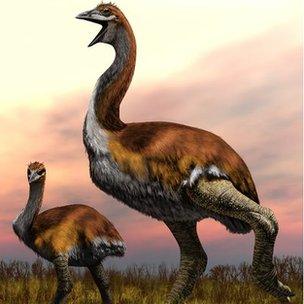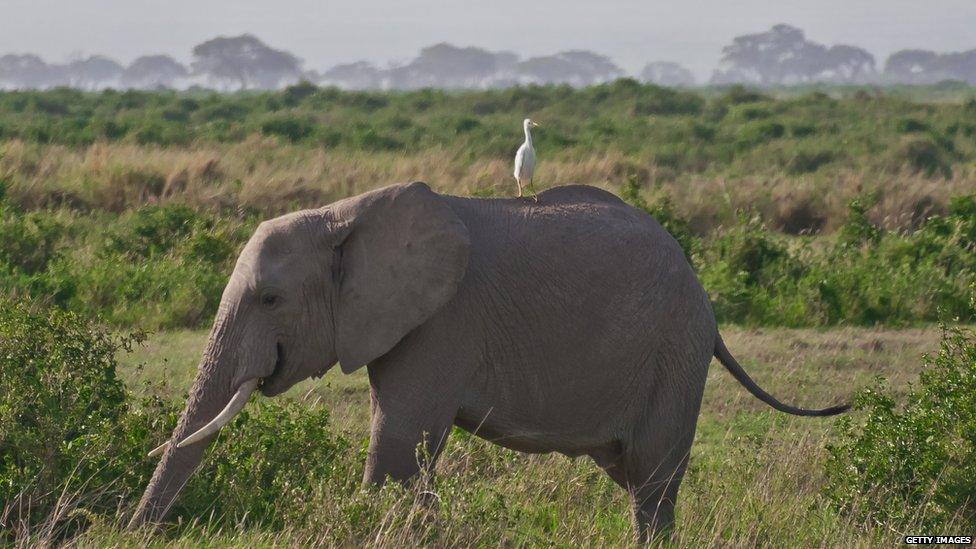Elephant birds: Who killed the largest birds that ever lived?
- Published

The bones of the elephant bird were found at Christmas River in Madagascar
Prehistoric humans are under suspicion of wiping out the largest birds that ever lived after fossilised bones were discovered with telltale cut marks.
According to scientists, it's evidence that the elephant birds of Madagascar were hunted and butchered for food.
The remains have been dated to about 10,000 years ago.
Until now, the first settlers were thought to have arrived on the island about 2,500 to 4,000 years ago.
"This does push back the date of human arrival by 6,000 years, at least," says Dr James Hansford, a scientist at Zoological Society London, UK.
As well as raising questions about human history, the discovery suggests a "radically different extinction theory" is required to understand the loss of the island's unique fauna.

Cut marks on the bones bear the hallmarks of human hunting and butchery
Rather than wiping out the animals in a short time, humans seem to have lived alongside the birds for thousands of years, before they went extinct around 1,000 years ago.
"Humans seem to have coexisted with elephant birds and other now-extinct species for over 9,000 years, apparently with limited negative impact on biodiversity for most of this period, which offers new insights for conservation today," says Dr Hansford.

The giant egg is equivalent in volume to 150 chicken eggs
Elephant birds were once a common sight on Madagascar.
They weighed at least half a tonne, stood at around 3m tall and laid giant eggs, which were bigger even than those of the dinosaurs.
The elephant birds, Aepyornis and Mullerornis, lived among other remarkable species on the island, including giant lemurs, which also died out.
There are a number of theories about why and when this happened, and how much humans were involved.

The birds had massive legs, taloned claws and a long, powerful neck
The research also overturns our ideas about the first human arrivals on the tropical island.
"We do not know the origin of these people and won't until we find further archaeological evidence," says Prof Patricia Wright from Stony Brook University, co-researcher of the study.
"The question remains - who these people were? And when and why did they disappear?"
The research is published in the journal, Science Advances, external.
Follow Helen on Twitter, external.
- Published19 September 2017

- Published24 August 2017
